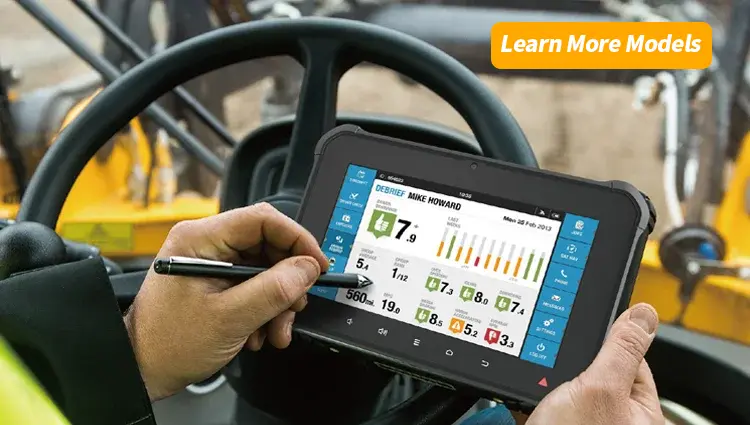Mobile Data Terminal: A Comprehensive Guide
Mobile Data Terminals (MDTs) are an integral part of modern communication systems, particularly in public safety and transportation sectors. These devices enable real-time data exchange between vehicles and central command centers, enhancing efficiency and response times. In this guide, we will explore the various applications, features, and benefits of MDTs, with a focus on police, ambulance, and fire services.
- Mobile Data Terminal Examples
- What is a Mobile Data Terminal Used for?
- What is the Mobile Data Terminal in Police Cars?
- What is the MDT in Police Cars?
- What is a Portable Data Terminal?
- What is an Example of a Data Terminal?
- What are the Different Types of Terminals Used for Data Input?
- What are the Three Types of Terminals?
- What are the Two Basic Input Devices Used to Input Data?
- How Does a Dumb Terminal Work?
Mobile Data Terminal Examples
MDTs come in various forms, including fixed and portable units. Fixed MDTs are typically installed in vehicles, such as police cars, ambulances, and fire trucks, while portable MDTs can be carried by personnel. Examples of MDTs include ruggedized laptops, tablets, and handheld devices.
What is a Mobile Data Terminal Used for?
MDTs serve multiple purposes across different industries. In public safety, MDTs are used for dispatching, messaging, and accessing databases. Police officers can receive real-time alerts, query license plates, and access criminal records. Similarly, MDTs in ambulances allow paramedics to access patient information and communicate with hospitals. Fire services use MDTs for navigation, hydrant locations, and hazardous material data.

What is the Mobile Data Terminal in Police Cars?
The mobile data terminal in police cars, commonly referred to as an MDT, is a computerized device that enables officers to access criminal databases, receive dispatch information, and communicate with other officers and dispatchers. This enhances officer safety, efficiency, and situational awareness.
What is the MDT in Police Cars?
The MDT in police cars is a critical tool for modern law enforcement. It allows officers to perform a wide range of tasks, including checking driver’s licenses, running warrant checks, and accessing criminal histories. By integrating with police databases and dispatch systems, MDTs streamline operations and improve officer efficiency.
What is a Portable Data Terminal?
A portable data terminal (PDT) is a handheld device that serves as a mobile extension of an MDT. PDTs are used in various industries, such as logistics and retail, for tasks like inventory management, barcode scanning, and order processing. In public safety, PDTs provide officers and first responders with real-time data access and communication capabilities on the go.
What is an Example of a Data Terminal?
An example of a data terminal is a fixed MDT installed in a police car. This device allows officers to access critical information, such as dispatch details, real-time alerts, and databases, while on patrol. By integrating with other systems, such as CAD (Computer-Aided Dispatch) and RMS (Records Management System), MDTs provide comprehensive solutions for law enforcement agencies.
What are the Different Types of Terminals Used for Data Input?
The two primary types of terminals used for data input are fixed and portable terminals. Fixed terminals, such as MDTs installed in vehicles, provide a stable platform for data entry and access. Portable terminals, like handheld devices and tablets, offer flexibility and mobility, allowing users to input and access data on the go.
What are the Three Types of Terminals?
The three types of terminals commonly used for data input are:
1. Dumb terminals: These are basic devices that rely on a central server for processing and data storage.
2. Smart terminals: These terminals have more processing power and can perform tasks independently.
3. Portable terminals: These are handheld devices, like smartphones and tablets, that offer mobility and flexibility for data input and access.
What are the Two Basic Input Devices Used to Input Data?
The two basic input devices used to input data are keyboards and touchscreens. Keyboards are traditional input devices that allow users to type information, while touchscreens enable users to interact with the device by touching the screen directly.
How Does a Dumb Terminal Work?
A dumb terminal is a basic computer terminal that relies on a central server for processing and data storage. It does not have its own processing power or storage capabilities. Instead, it sends user input to the server, which processes the data and sends the results back to the terminal for display. Dumb terminals are commonly used in situations where multiple users need access to the same data and applications.
In conclusion, Mobile Data Terminals (MDTs) are essential tools for public safety and transportation sectors, enabling real-time data exchange and communication between vehicles and central command centers. With their various applications, MDTs enhance efficiency, response times, and officer safety. Examples of MDTs include fixed and portable units, such as ruggedized laptops, tablets, and handheld devices. The mobile data terminal in police cars, commonly referred to as an MDT, is a computerized device that enables officers to access critical information and communicate with other officers and dispatchers. Portable data terminals (PDTs) serve as mobile extensions of MDTs, providing real-time data access and communication capabilities on the go. The two primary types of terminals used for data input are fixed and portable terminals.








